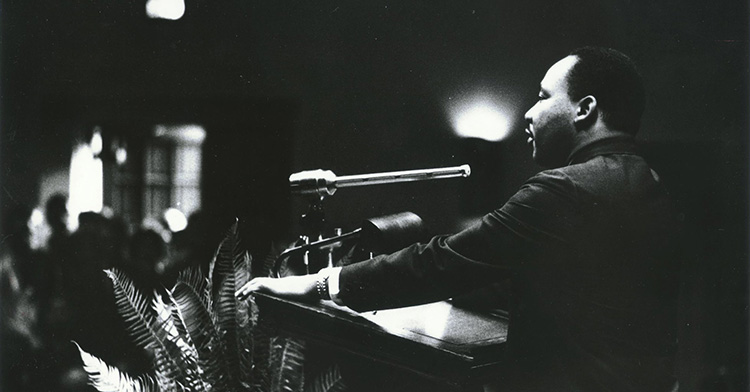My child, eat honey, for it is good, and the drippings of the honeycomb are sweet to your taste. Proverbs 24:13 (NRSV)
I am a beekeeper. My husband and I tend seven beehives from which we process 600 to 700 pounds of honey each year. We also host honey tastings at our farm in Madison County, Indiana.
We love to teach people about bees -- in particular, their unique importance to the local ecology.
Did you know, for example, that bees bring abundant life to the planet by pollinating 1 out of every 3 bites of food on our plates? That honey is the only food that contains everything necessary to sustain life, including water? Or that bees are the only organism that kills nothing to survive?
I’m also a pastor, and I’m fascinated by the long connection between bees and faith leaders. In the Middle Ages, for example, the monks and nuns were beekeepers. They were primarily interested in making smoke-free beeswax candles, which illuminated and brought warmth to Gothic churches, representing the light of Christ to the gathered community.
Christian leaders and beekeepers have for centuries been fascinated by the bees’ efficient ability to humbly produce beeswax, together with sweet, life-giving honey that’s an elegant reflection of its local context.
We call this unique environmental influence “terroir.” A French word often associated with wine and honey, it is best translated as “specificity of place” and describes the combined environmental factors (soil, climate, topography, surrounding plants) that give wine and honey (and other crops where taste is studied) their distinctive flavor.
Every flower from which bees collect pollen and nectar grows on a unique piece of land. That land and its topography impart a distinctive scent and taste to the honey.
For example, nectar from eucalyptus trees imparts an unmistakable eucalyptus aroma. The same is true, more subtly, with lavender and wildflowers.

I love the taste of the honey from our farm because it carries light floral and berry notes, flavored by our large wildflower garden and clover grasses and by the wild black raspberry bushes along the back fence line. Honey is an elegant reflection of its environment -- the local flavor and specific place.
In my work at the Wabash Pastoral Leadership Program, we often talk about the concept of terroir and how it can be applied to ministry.
We invite pastors to attune deeply to the abundance, challenges, resources and networks of their local communities. We help them see that their communities have a kind of flavor and “specificity of place” that is shaped by interdependent factors -- things like human and capital resources, demographics, other nonprofit organizations, even topography.
The program, hosted by Wabash College, is rooted in adaptive leadership theory. Over two years, participants’ pastoral and ecclesial imaginations are directed toward adaptive challenges in their specific Indiana communities. We’ve found that the most effective solutions reflect the local terroir.
Through the gift of pastoral and ecclesial imagination at work through the Holy Spirit, participants discover new possibilities for local ministry in each particular place that God so deeply loves.
For example, a pastor in an underresourced southern Indiana community recognized that high school students were not well prepared for the workforce, nor were many able to attend trade schools or college.
After talking to local leaders and studying the context, the pastor engaged with Conexus Indiana to bring an advanced manufacturing and logistics curriculum to the local high school. This in turn created post-high school career opportunities and higher employment.
A pastor in a very different context identified a different challenge. Some 25 years earlier, a donor had given 120 acres of land to his suburban congregation, but the congregation was not using it. This pastor drew on local expertise to begin a suburban farm.
The harvest has been plentiful. So have the benefits. The shared work in the gardens is building community, promoting sustainable growing practices and helping combat obesity. The farm hosts summer children’s camps on gardening and healthy food practices.
The congregation donates thousands of pounds of food to Indianapolis food pantries -- and its members have found renewed joy by doing so.
Another pastor in an urban area paid deep attention to his local community and discovered that many people were struggling with medical debt, one of the major causes of bankruptcy. Aggressive medical debt collection agencies garnished people’s wages, making it impossible for some to pay rent. Many lost their homes.
This pastor mobilized several churches in his region to work together, and in partnership with a nonprofit debt relief agency, the churches eliminated $12 million in medical debt for Hoosiers in northwest Indiana.
None of these activities would be listed on a traditional pastoral job description, but at the center of the Christian faith is a belief in the incarnation of Jesus: “The Word became flesh and blood, and moved into the neighborhood” (John 1:14 The Message).
I think the lessons of our program can apply to all pastors. Those who follow Jesus into their own neighborhoods see the beauty and the real needs of those places and connect to the abundance already there -- often in the form of other churches, civic leaders and nonprofits.
In the same way that lavender subtly flavors honey, pastors have before them a chance to pay deep attention to -- and then, by God’s grace, help shape -- the distinctiveness, specificity, unique beauty and abundance that imbues their particular places of ministry.




















